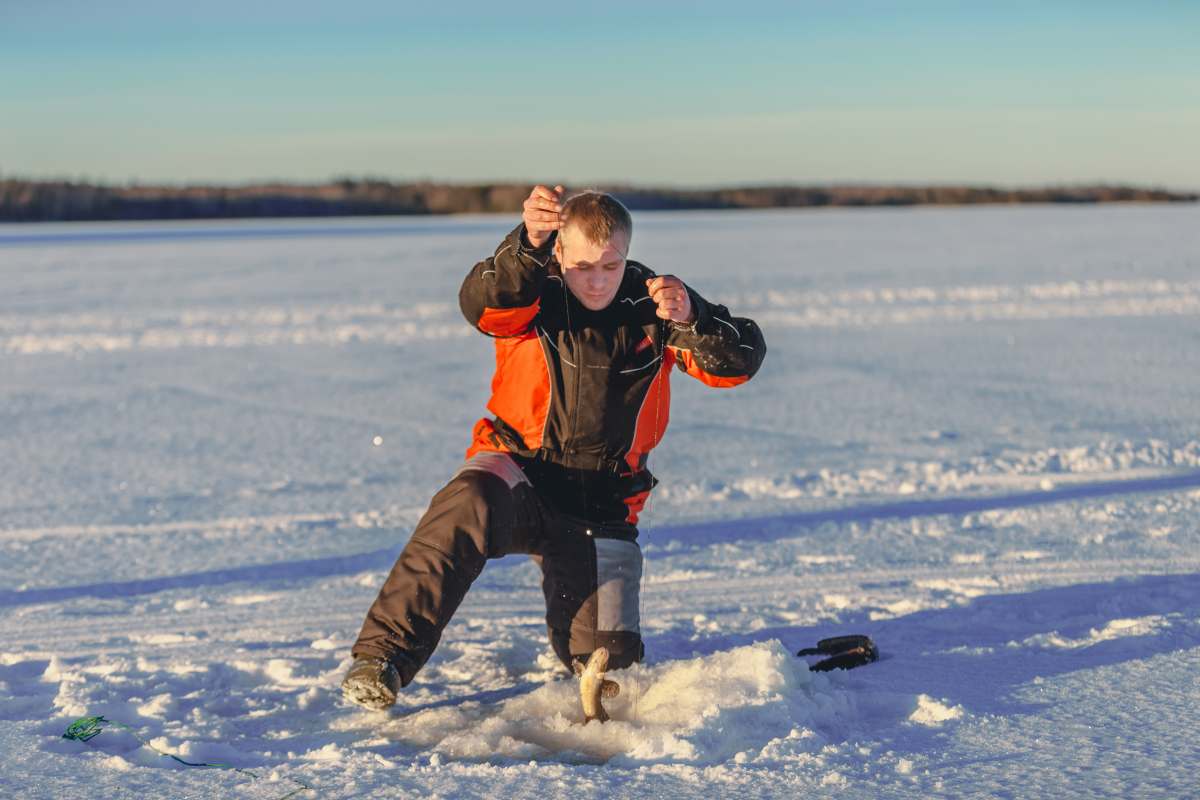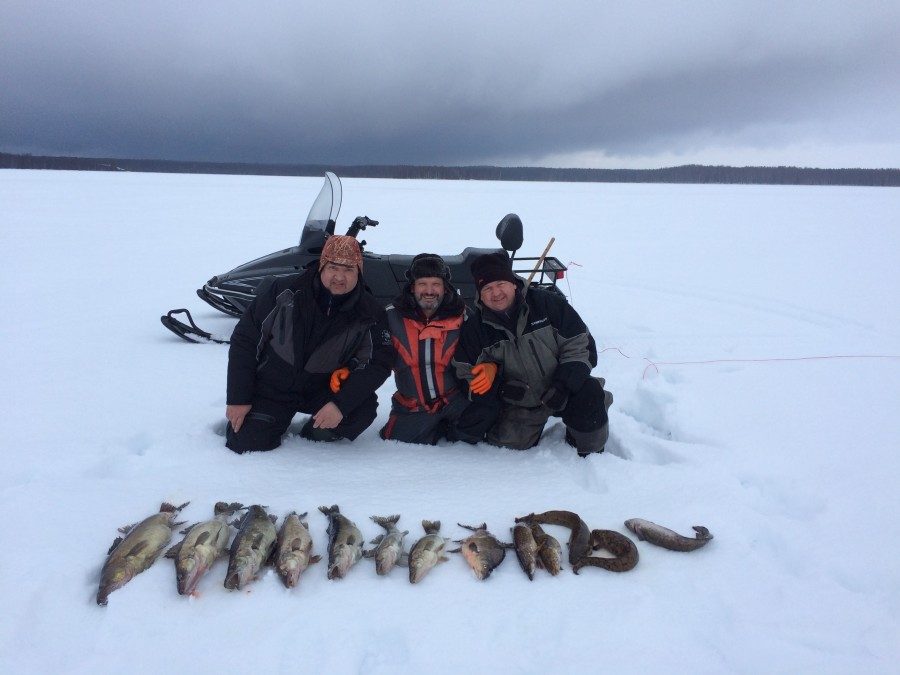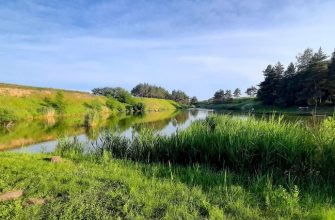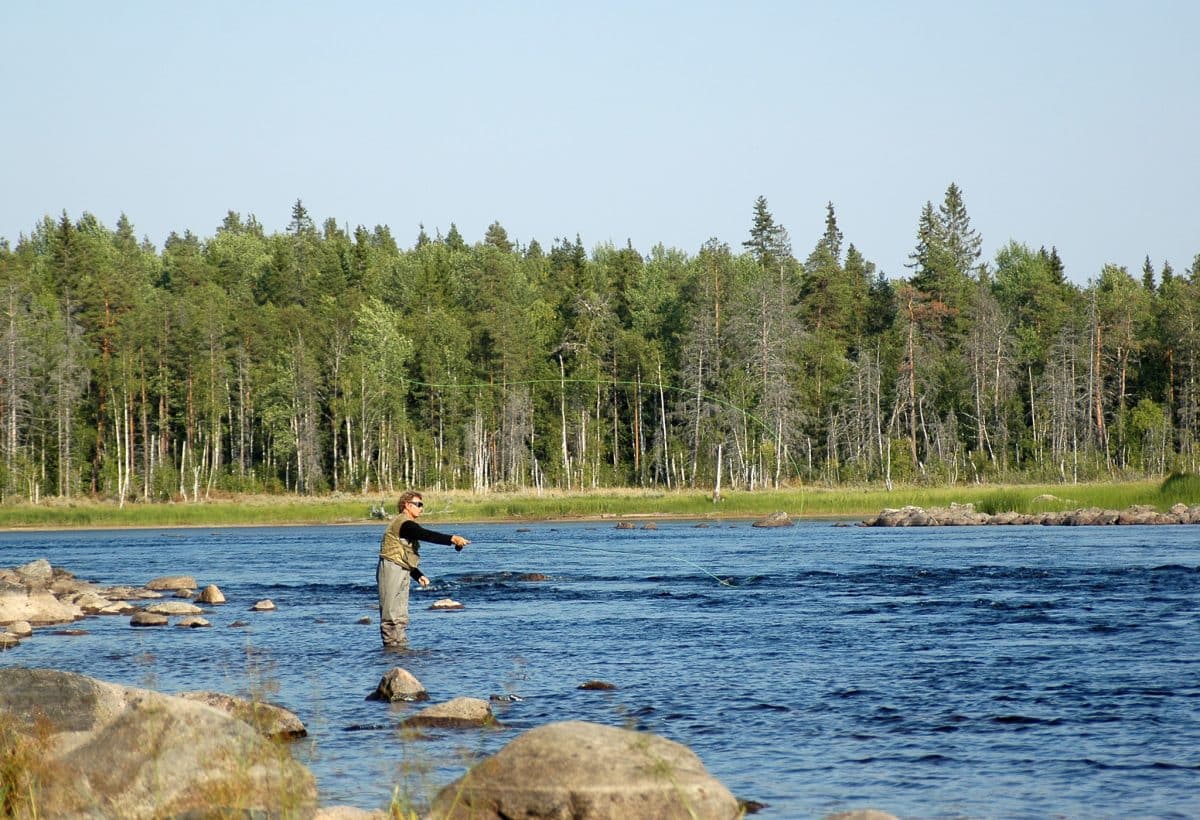It is not for nothing that Karelia is called the “land of lakes”. On its territory there are more than 61,000 lakes, 27,000 rivers and 29 reservoirs. In addition, the coast of the White Sea adjoins the republic. In this case, only freshwater fishing will be considered.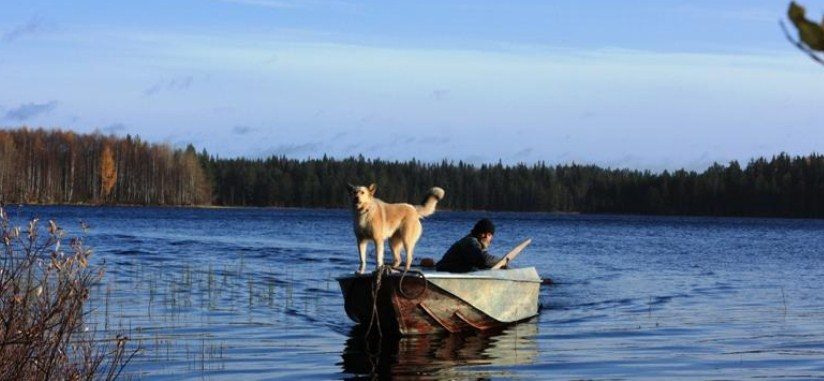
- Where to fish in Karelia – rivers, lakes, reservoirs
- Lakes of Karelia – the best places for fishing
- Ladoga lake
- Lake Onega
- Syamozero
- Pyaozero
- Lizhmozero
- sandalwood
- Tiksheozero
- Rivers of Karelia
- Shuya
- Keret
- reservoirs
- Recreational fishing rules in Karelia
- Rest and fishing in Karelia as a savage
- Recreation and fishing in the bases of Karelia
- Features of fishing in Karelia
- Поделиться ссылкой:
Where to fish in Karelia – rivers, lakes, reservoirs
The Republic of Karelia includes 16 districts. There are ponds in everyone. Accordingly, fish can be caught everywhere, although, of course, each reservoir has its own characteristics. In total, 47 species of freshwater fish have been registered in the ichthyofauna of Karelia.
Lakes of Karelia – the best places for fishing
Ladoga lake
First of all, it is necessary to say about Lake Ladoga, part of which is located in the Leningrad region, and part in Karelia. The northern Karelian part of Ladoga is represented by skerries – rather narrow bays and gulfs with great depths and many islands of various sizes.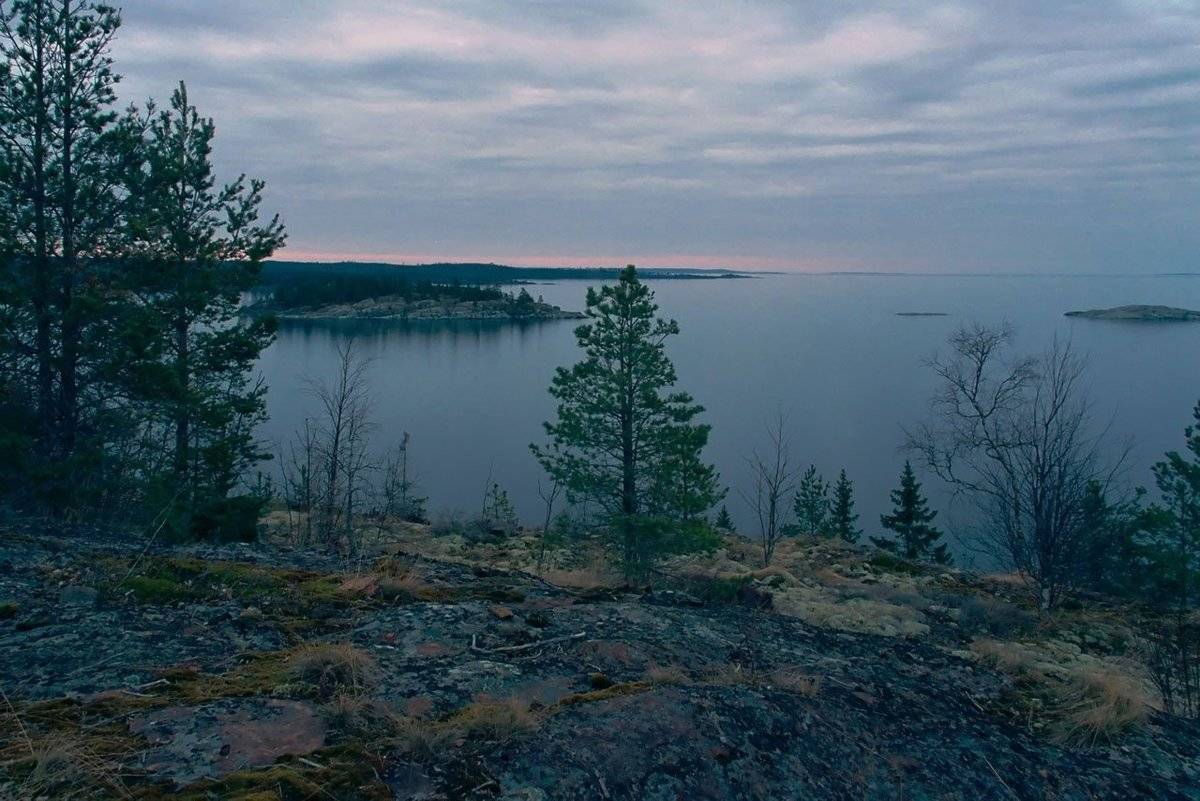
In skerries you can catch the following types of fish:
- perch;
- roach;
- bream;
- Pike;
- burbot;
- zander.
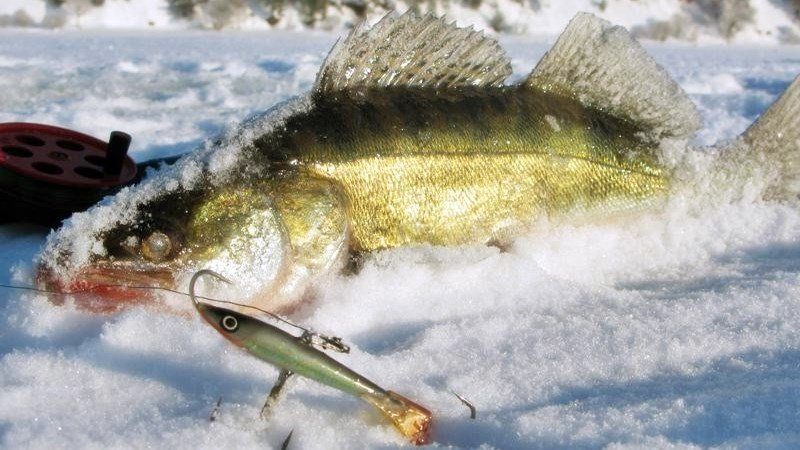
Healthy! The large island of Mantinsaari is located in the Pitkyaranta region of Karelia. Anglers from different parts of Russia come here to trolling for large pike, casting large schooling perch and grayling, which bites on rocky ridges. Lake grayling can grow to an impressive size.
Lake Onega
Onega is only slightly inferior to Ladoga in terms of area. The species composition of fish that can be caught without violating certain prohibitions is about the same here as in Ladoga. But it makes no sense to go to Onega for pike and perch, although if they are caught in by-catch, they delight anglers with their size. Mostly people go to Onega during the open water season for salmon and pike perch. Salmon fishing comes with some risk. In some years, a ban is imposed on salmon fishing, and then anglers have to catch a serious fine under the “sword of Damocles”.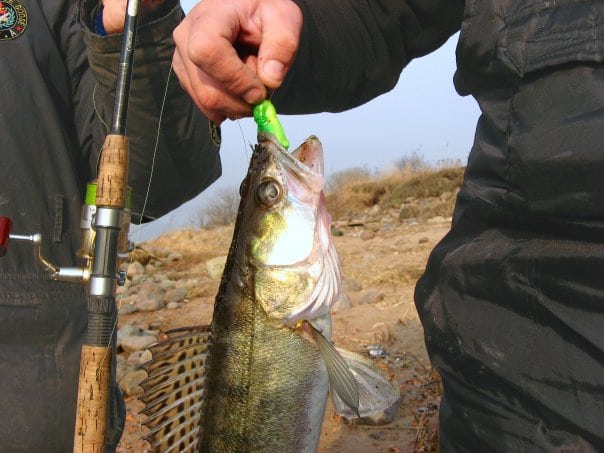 In other years, licensed fishing is allowed. Recommendations on whether to ban or allow salmon fishing, unfortunately, are given not by ichthyologists, but by officials who have a very remote idea about fishing. Salmon is caught exclusively by trolling on certain models of wobblers and large oscillating baubles, for example, Kuusamo Professor.
In other years, licensed fishing is allowed. Recommendations on whether to ban or allow salmon fishing, unfortunately, are given not by ichthyologists, but by officials who have a very remote idea about fishing. Salmon is caught exclusively by trolling on certain models of wobblers and large oscillating baubles, for example, Kuusamo Professor.
multiplier reels . Lake Onega on the map of Karelia:
In winter, those who like catching large burbot and keel go to Onega. Kilets is the local name for ripus, which is a large form of vendace. Ripus also comes across in Ladoga, but much less often and smaller. Keels are caught halfway with special spinners. On the fishing line above the bait, an artificial fly or its analogue is tied. Kilets pecks at her more often. Some catch keel for maggots. Burbot is mined with the help of a stalker – a special tackle, on which a jig head with artificial or natural bait is used as a bait. Winter fishing in Karelia 2022, Onego, Zaonezhye: https://youtu.be/uGHnOl1xil0
Attention! Burbot goes to the sound of the bait on the bottom, and a louder sound is obtained if the jig head is made of non-ferrous metal.
Some anglers additionally expose donks with fish or their pieces. Previously, pood burbots often became trophies. There is a lot of grayling in Lake Onega, which, with appropriate experience, can be caught. Other lakes in Karelia, although not as huge as Ladoga and Onega, are also impressive in size. The most famous of them are listed below. Fishing in Karelia – season 2022, video report: https://youtu.be/TlToabu1oAI
Syamozero
A large lake of glacial origin, although not very deep. There are many islands in the water area. Mostly people come here for large pike and pike perch, which can be caught in a variety of ways: casting and trolling, at depths and on banks. There are a lot of ruff and vendace in the lake, which feed on the aforementioned predators. To catch bream, grayling and burbot, you will have to make some efforts. Secrets of winter fishing in Karelia – Syamozero: https://youtu.be/1YpJ_xKFCDQ
Pyaozero
A large lake in the north of Karelia, where they go in the hope of catching char or trout. They are caught by trolling, with brown trout at half water, and palia at great depths – where there are stony placers. But even if you fail to catch these representatives of salmon, you can go fishing for pike and perch, which abound in the lake. There is also burbot, and it is better to catch large ones near the islands.
Lizhmozero
A lake in southern Karelia, located about 550 km from St. Petersburg. People come here for large pike and perch, and not only Karelians and Petersburgers, but also Muscovites and residents of other regions. Large pike are caught by trolling on large wobblers or on oscillating baubles with a deepener.
Important! There is one nuance, not knowing which you can stay with your nose. The pelagic pike feeds on vendace, which feeds on plankton and therefore keeps to half water. Even if the depth under the boat is 15 meters, the baits should go no deeper than 6 meters, and more often higher – by 3-5 meters.
Having found a flock of vendace on the echo sounder, you should catch it above it. Usually the silhouettes of predators are visible on the echo sounder. But pikes are extremely picky about the models and colors of wobblers, and their preferences can change even during one fishing trip.
sandalwood
Lake near Lizhmozero. Rich in zander, although mostly medium-sized. They catch it in different ways, still preferring trolling.
Tiksheozero
A large lake in the north of Karelia. In the lake you can catch large trout, as well as trophy pikes and perches.
Attention! A serious disadvantage of large lakes is that in a strong wind it is not possible to get out on the water. And the winds there can be strong for several days. You have to hide on the leeward shore and fish in the coastal zone, and there are not always fish there.
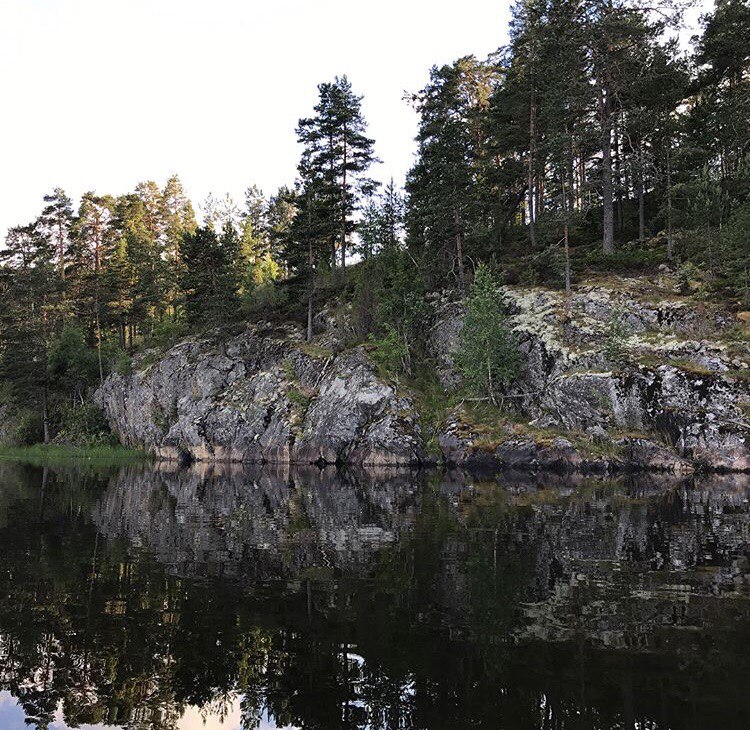
Rivers of Karelia
Shuya
A long full-flowing river, rich in fish, although the latter is very spoiled due to fishing pressure. And if catching a pike or perch is not difficult, then catching grayling and ide is available only to experienced anglers.
Keret
A river in the Loukhsky district, flowing into the White Sea. Licensed fishing for salmon and pink salmon is allowed on the river. Salmon are getting smaller every year, but acclimatized pink salmon once every two years pleases anglers with a good bite. You can catch it on traditional wobblers and spoons, but fishing with artificial flies mounted with bombards or
Tyrolean sticks (rolling fishing) is considered more effective.
reservoirs
The White Sea-Baltic Canal passes through Karelia, which, as a result of the construction of dams, was divided into several reservoirs. The species composition of fish in them is usual: roach, perch, bream, pike, pike perch. Fishing methods vary depending on the conditions.
Recreational fishing rules in Karelia
Fishing rules in Karelia are extremely complex and confusing. Therefore, it makes sense to bring the size of fish allowed for fishing and catch limits. In Karelia, it is possible to remove fish from the reservoir not less than the following size:
- pike – 40 cm;
- pike perch 45 – cm;
- bream – 35 cm;
- grayling – 25 cm.
Restrictions on the number of fish caught are stricter than in the neighboring Leningrad region (if fishing is not licensed). In particular, you can catch:
- whitefish – 1 kg;
- pike perch – 2 kg;
- ide – 5 kg;
- bream – 5 kg;
- trout – 5 kg;
- smelt – 15 kg.
It is better to go fishing in Karelia by private vehicles, although some places can be reached by train with subsequent delivery to the desired place by public transport or by taxi.
Rest and fishing in Karelia as a savage
Many anglers prefer to rest as savages. This has its advantages: the absence of annoying neighbors, the choice of the optimal parking lot, and finally, romance. Cons – you have to provide yourself with firewood and cook food. For a complete wild holiday, you must have the following items of equipment:
- a good stable tent;
- rain cover;
- chainsaw;
- axes;
- gas stove;
- a set of various dishes;
- insect repellants.
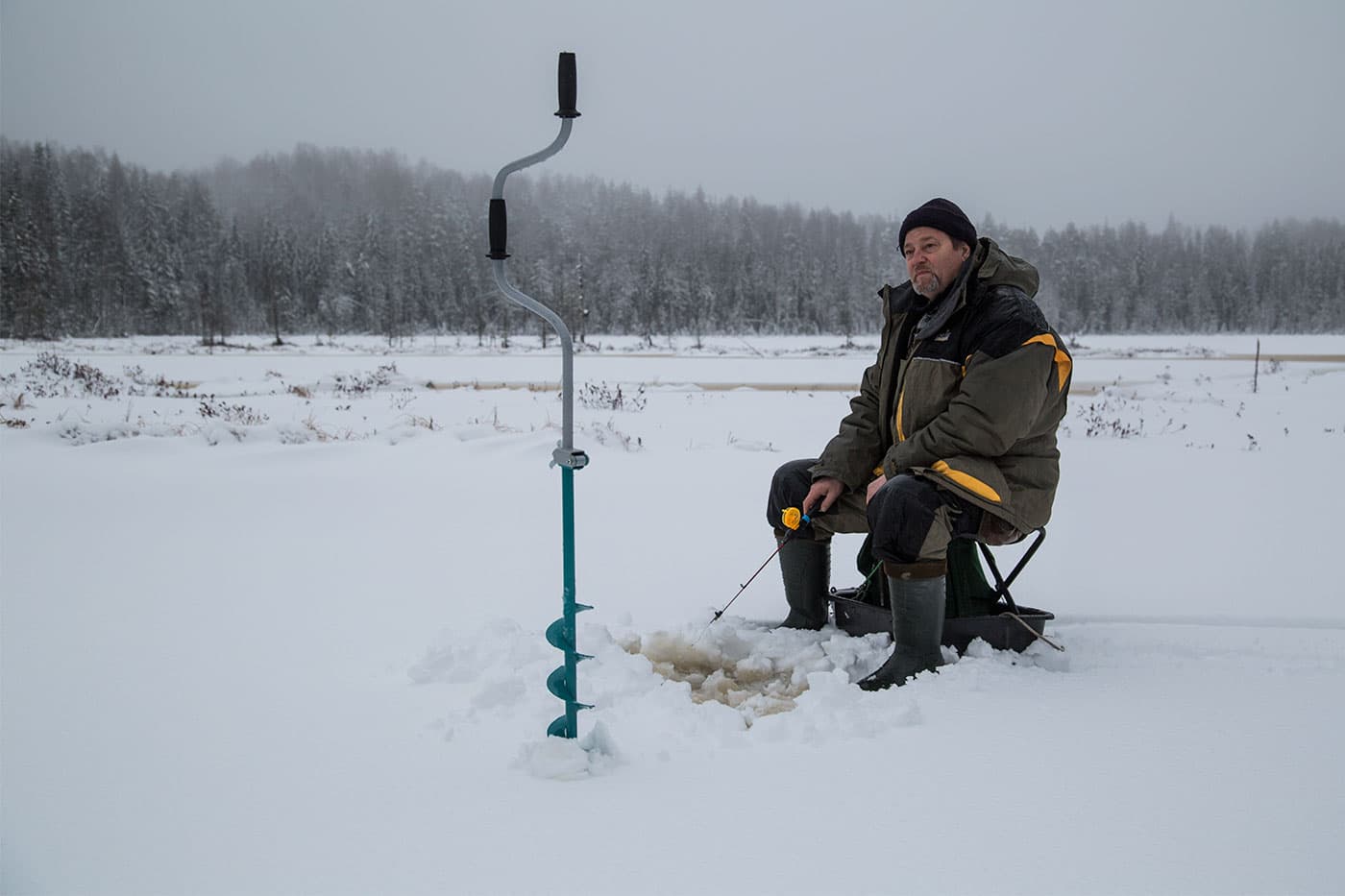
Recreation and fishing in the bases of Karelia
Fishermen who love comfort are offered services by numerous bases – from budget to VIP-class. Below is a list of several bases and prices for services in 2022:
- fishing base “Bryaus” – from 1800 rubles. per day;
- recreation center “Onega coast” – from 3000 rubles. per day;
- camping Nord Camping – from 500 rubles. per day;
- guest complex “Seasons” – from 5300 rubles. per day;
- tourist center “Shuezero” – from 1500 rubles. per day;
- tourist complex “Alekka” – from 1300 rubles. per day;
- recreation center “Three Islands” – from 1,800 rubles. per day;
- tourist complex Velt (Kalevala) – from 1900 rubles. per day;
- guest house Kuitto (Kalevala) – from 4000 rubles. per day;
- recreation center Korkiniemi tract – from 3800 rubles. per day;
- recreation center Inzhunavolok – from 3530 rubles per day;
- tourist complex Kudama – from 800 rubles. per day;
- country recreation center Uya – from 250 rubles. per day;
- recreation center Meklakhti – from 2300 rubles. per day;
- recreation center Mantiansari – from 8455 rubles. per day;
- recreation center Bolshaya Medveditsa – from 3300 rubles. per day;
- recreation center Scythians tour – from 2000 rubles. per day;
- tourist center Shuezero – from 1500 rubles. per day;
- recreation center Svyatozero – from 5900 rubles. per day;
- recreation center Lena-Ladoga – from 2000 rubles. per day.
Some bases organize fishing tours. For example, a travel agency in Kalevala organizes a Grayling Safari Tour. It includes the following services:
- delivery from Kemi to Kalevala;
- delivery to the lake;
- trip on a large inflatable raft on the lake with fishing;
- rafting down the Pisto river to the nearest island;
- accommodation on the island in tents for four days;
- fishing on the Pisto River, during which you can catch:
- grayling;
- trout;
- salmon
- dace;
- roach;
- perch;
- extreme rafting on the rapids of the Pisto River;
- delivery to Kalevala, and then to Kem.
Fishermen are accompanied by two experienced guides during the hike: one of them is a rafting specialist, the second is a fishing guide. The cost of the tour is 65 thousand rubles. for 4 people.
https://youtu.be/LuVfPKnplkA
Features of fishing in Karelia
Having carefully considered all the nuances of fishing on the territory of the Republic of Karelia, we can draw the following conclusions:
- it is better to get to the fishing place by personal transport;
- for fishing in large reservoirs, you need a reliable watercraft, better than RIB;
- the motor must match the size of the craft;
- since there is no cellular connection in many areas, it does not hurt to take walkie-talkies with you;
- before the trip, you must carefully study the Fishing Rules for a particular place in order to avoid trouble;
- fishing in remote places suggests possible encounters with wild animals, in particular, with bears. You should read how to behave when meeting with a clubfoot and take with you false arms, signal and sound rockets, and if there is permission, then a gun.
